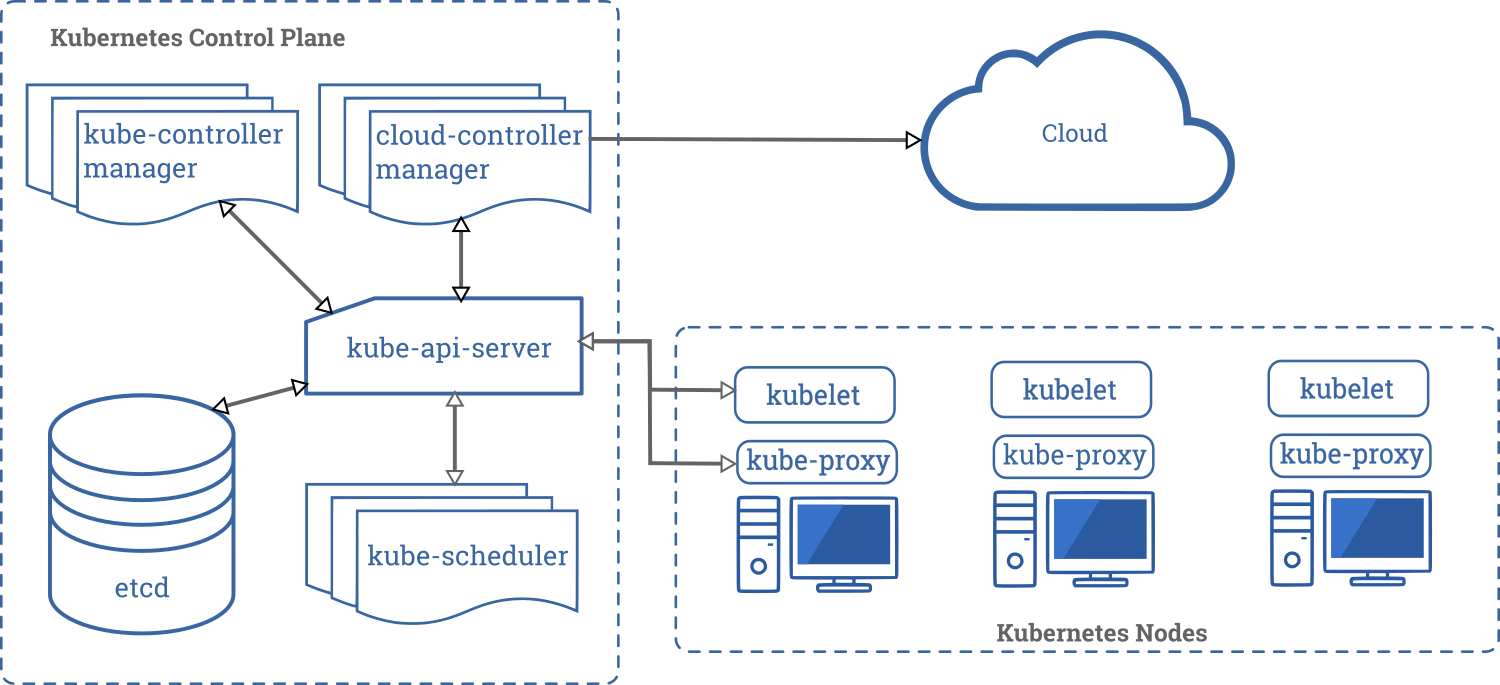| title | theme | revealOptions | ||
|---|---|---|---|---|
How to keep your k8s workers healthy, patched and secure without any impact on hosted applications. |
solarized |
|
- glossary
- worker lifecycle
- be smart about your worker OS
- tools to make your life easier
- Q&A
Michal Schott
- WebOps Engineer
- Street Manager
- k8s or die!
-
k8s - kubernetes
-
k8s masterplane - set of VMs to control state of k8s cluster
-
k8s workers - these are running your containers, regular VM with OS attached to k8s masterplane
-
kubectl - ssh replacement
Note:
- k8s workers - regular VM with OS attached to k8s masterplane
-
pod - collection of containers
-
endpoint - IP address of single pod
-
service - load balanced collection of endpoints
-
PDB - pod disruption budged
Note:
- service - (round robin) dedicated single IP to access your containers
- PDB - how many pods needs to stay in healthy state during maintenance
-
node is healthy - no kernel deadlocks, kubelet is ready...
-
patched - OS is up-to-date with all patches available
-
secure - attack vector is as small as possible
-
impact on hosted application - end user do not notice downtime
-
node unscheduleable - k8s scheduler can NOT assign pods to node // kubectl cordon
-
node scheduleable - k8s scheduler can assign pods to node // kubectl uncordon
-
eviction - pod termination event, usually happens when you want to relocate workload to different worker // kubectl drain
-
Worker VMs runs kubelet
-
kubelet contacts k8s-apiserver, presents identity and request for client certificate
-
k8s-apiserver validates identity and returns certificate to the client
-
kubelet starts any further communication using client certificate // mTLS
-
hearthbeat, node lease objects in kube-node-lease
-
kubectl get/describe node
Note:
kubectl -n kube-node-lease get lease
Each Node has an associated Lease object in the kube-node-lease namespace. An abstraction used by Kubernetes to support multiple virtual clusters on the same physical cluster.
Lease is a lightweight resource, which improves the performance of the node heartbeats as the cluster scales.
Note: terminate aws instance
show node is still there in k8s store
it will disappear after a while
- containers had no time for graceful shutdown
- possible service disruption - how to prevent this?
Note: Any stateful workload could be interrupted, which might lead to data inconsistency
You cant fully prevent such situations but you can do it way better
Note: kubectl cordon
kubectl drain
reboot
kubectl uncordon
- containers were gracefully terminated
- k8s-scheduler was able to schedule new replicas on different nodes
- 100% service uptime
- k8 supports both Linux and Windows
- ubuntu? rhel?
- what else have we got?
- AWS - Amazon Linux
- GCP - Container-Optimized OS
- Azure - ?
- RHEL / CentOS / Fedora Atomic Host
- Ubuntu have most recent and updated kernel (first distro with 5.X)
- Core CoreOS
- RHEL/Fedora CoreOS
- Kinvolks FlatCar Linux
They've build:
rkt // etcd // quay
clair // dex // flannel
ignition // tectonic
AND A LOT MORE
Recently they were acquired by Red Hat (and by IBM)
Kinvolks Flatcar Linux continues CoreOS legacy
- reduce attack surface
- immutable file system
- driven by principle of least privilege
- automatic updates
- secure container runtime
- pick container-optimised linux flavour
- kured
- coreos/container-linux-update-operator
- kinvolk/flatcar-linux-update-operator
- node-problem-detector
- node-local-dns-cache
- k8s-spot-termination-handler
- cluster-autoscaler!
- overprovision nodes with cluster-proportional-autoscaler!


